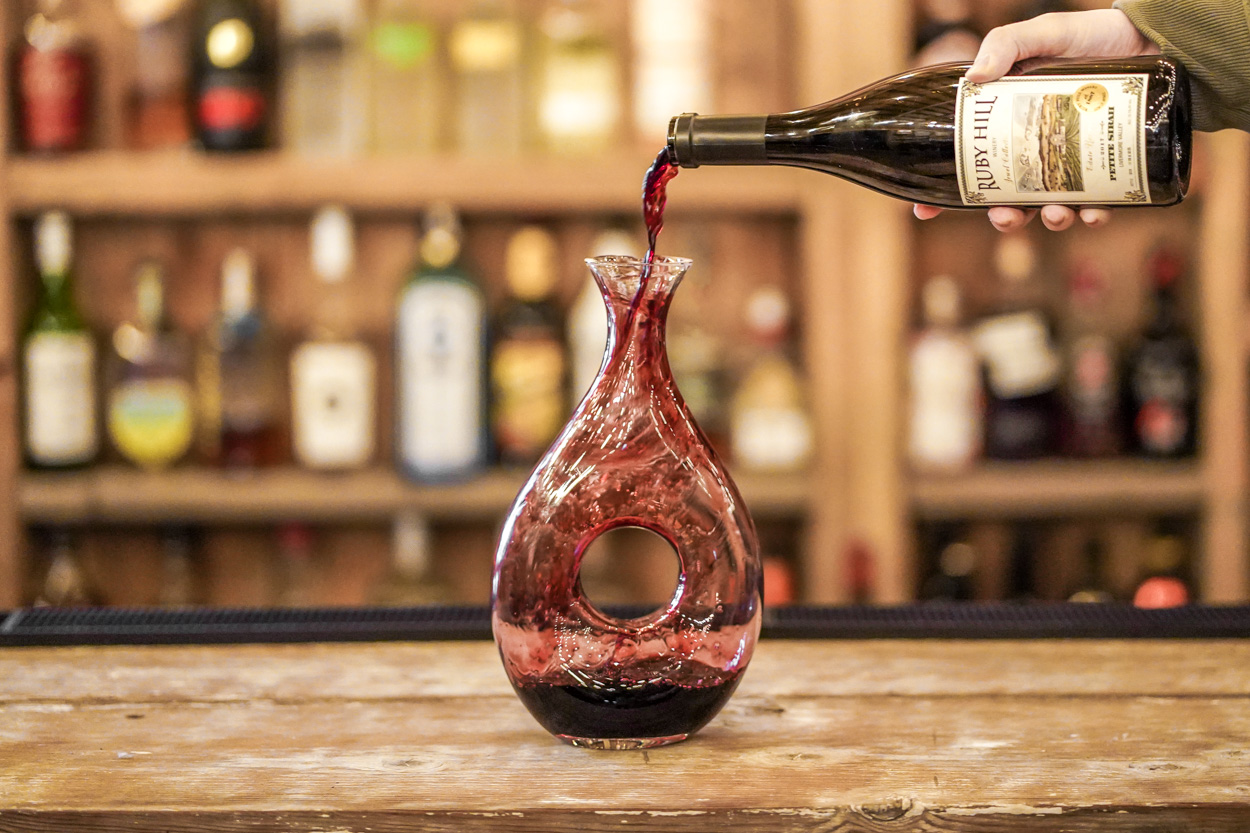Quick Guide to Decanting Wine

When pouring and serving wine, the wide variety of options can be a bit overwhelming. To help simplify this a bit, it helps to know the benefits of each option to find what suits you. You always have the option of serving wine straight from the bottle. Often, this will work just fine! Simple carafes are also helpful to show off the color of the wine, or to make the wine easier to pour. The ever-popular elevated option, the decanter, offers unique benefits. Should you decant your wine? Read on and discover if this is right for your bottle!
A Brief History
Decanters actually find their origins as far back as ancient Greece, where they would have been made out of clay. Later, the Romans introduced the use of glass as the preferred material for serving wine. The decanter’s characteristic slender neck with its elegance and drama became standard among Venetians during the Renaissance. Very few changes have been made to the overall design concept since then, though we do see a wide variety of shapes as glass blowing technology has advanced.
Benefits of Decanting
When it comes to the actual benefits for wine, there are three main factors: aeration, elimination of sediment, and aesthetics. Every wine will benefit from these things differently, so there are a few important details to consider.
To Aerate or Not to Aerate
There is a wide range of opinion within the wine world regarding aeration, but the simple answer is that allowing wine to “breathe” allows for a new perspective on your wine. By pouring wine into a decanter, aeration releases aromas for fuller enjoyment. In the case of big, especially tannic reds, an hour or so in the decanter before pouring yields a smoother, more enjoyable wine. For wines that are more medium-bodied, similar benefits are offered by a slightly shorter aeration time, 30 minutes to an hour. Delicate wines such as those that have been aged for a long time or light red varietals like Sangiovese or Pinot Noir need very little time. Delicate tropical or fruity notes may be muted after extensive aeration, so if the wine you are enjoying displays these flavors, decanting may be less ideal.
Feeling Sediment-al
A popular benefit of decanters is to limit sediment in wine. Sediment is naturally formed over time in wine bottles, particularly reds with at least 5-10 years of aging.. It is not harmful to the flavor or integrity of the wine, but it’s not exactly pleasing to the eye or on the palate. Fortunately, many wineries, Ruby Hill included, use advanced filtration systems that prevent excessive sediment levels. Even still, sediment is nothing to be feared especially if you have a decanter.
Pouring and Serving Tips
Before serving, it’s wise to leave the bottle upright for 24 hours to let the sediment settle at the bottom. When you’re ready to enjoy, pour slowly into the decanter, with the bottle at a 45 degree angle, allowing the sediment to collect at the base of the wine bottle’s neck, and leave the last ounce of liquid in the bottle. Decanters are also useful if a cork breaks and crumbles into the wine—just place a strainer over the mouth of the decanter as you pour from the bottle.
Perfect Presentation
The final benefit of the decanter is simple aesthetics. There’s no shame in appreciating something elegant, beautiful, and with just a touch of drama!
Whether you decant or not, what's most important is that you enjoy your favorite wines in your favorite way. Shop our full collection of local estate-grown wines today!
Comments
Commenting has been turned off.Enjoy complimentary ground shipping when you order 6 or more bottles.
Sign Up For Our Newsletter
Keep up to date on the latest wine releases, events, and promotions.